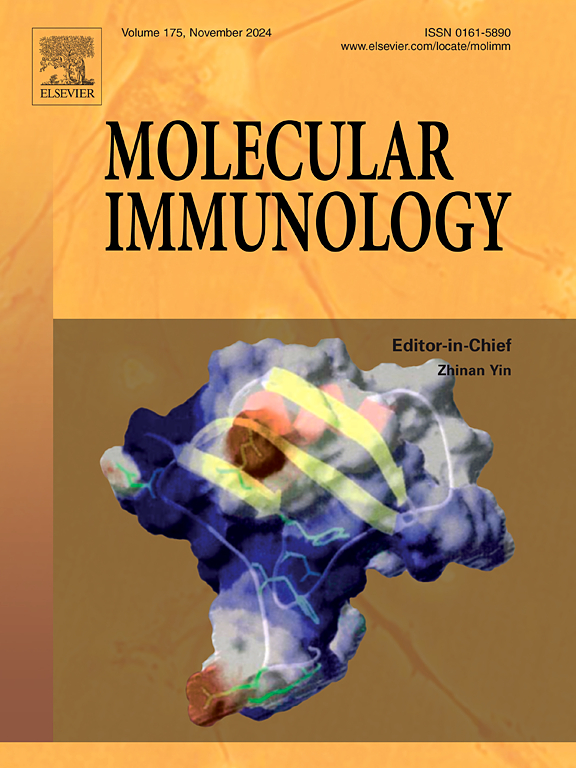Novel mechanistic insights into the comorbidity of anemia and rheumatoid arthritis: Identification of therapeutic targets
IF 3
3区 医学
Q2 BIOCHEMISTRY & MOLECULAR BIOLOGY
引用次数: 0
Abstract
Objectives
To investigate the mechanisms underlying the comorbidity of anemia and rheumatoid arthritis (RA) and identify promising therapeutic targets.
Methods
We assessed the phenotypic linkage between anemia and RA. Using the largest genome-wide association studies (GWAS) summary statistics of European populations, we scrutinized the causal association and shared genetic architecture between the two conditions using multiple complementary approaches.
Results
Logistic regression analysis confirmed a strong clinical association between anemia and RA. Using GWAS data, we identified a significant causal effect of RA on anemia and positive global genetic correlations between the two conditions (rg (genotype) = 0.28, P = 9.6 × 10−7; rg (gene expression) = 0.45, P = 2 × 10−3). After dividing the genome into 2495 independent regions, we identified 15 significant regions associated with both conditions, with 14 showing concordant effects. Fine-mapping at the SNP level revealed 72 % of RA-associated SNPs overlapped with anemia, most with concordant effects. Stratified Q-Q plots visualized the shared genetic enrichment, showing a 12-fold enrichment for RA conditional on anemia and 100-fold enrichment for anemia conditional on RA. Further analysis using conjFDR method pinpointed 14 pleiotropic loci, including several novel loci. Gene mapping identified 33 shared genes, with BLK and FAM167A further prioritized as the top two genes by SMR analysis. Enrichment analysis highlighted pathways related to inflammation, immune response, and iron metabolism. Blood and T cells showed significant tissue- and cell-type-specific enrichment.
Conclusions
This study provides novel insights into anemia-RA comorbidity mechanisms and identifies new drug targets for RA.
贫血和类风湿关节炎共病的新机制:治疗靶点的确定
目的探讨贫血和类风湿关节炎(RA)合并症的发病机制,寻找有前景的治疗靶点。方法评估贫血与RA之间的表型联系。利用欧洲人群最大的全基因组关联研究(GWAS)汇总统计数据,我们使用多种互补方法仔细检查了这两种疾病之间的因果关系和共享遗传结构。结果logistic回归分析证实贫血与RA有较强的临床相关性。使用GWAS数据,我们发现RA与贫血有显著的因果关系,两种情况之间存在正的整体遗传相关性(rg(基因型)= 0.28,P = 9.6 × 10−7;rg(基因表达)= 0.45,P = 2 × 10−3)。在将基因组划分为2495个独立区域后,我们确定了15个与这两种情况相关的重要区域,其中14个显示出一致的影响。SNP水平的精细图谱显示,72% %的ra相关SNP与贫血重叠,大多数具有一致性效应。分层Q-Q图显示了共同的遗传富集,显示贫血条件下RA的富集为12倍,贫血条件下RA的富集为100倍。利用共轭fdr方法进一步分析确定了14个多效位点,其中包括几个新的位点。基因定位鉴定出33个共有基因,SMR分析进一步将BLK和FAM167A列为前两个基因。富集分析强调了与炎症、免疫反应和铁代谢相关的途径。血液和T细胞表现出明显的组织和细胞类型特异性富集。结论本研究为贫血-RA合并症机制提供了新的见解,并确定了RA的新药物靶点。
本文章由计算机程序翻译,如有差异,请以英文原文为准。
求助全文
约1分钟内获得全文
求助全文
来源期刊

Molecular immunology
医学-免疫学
CiteScore
6.90
自引率
2.80%
发文量
324
审稿时长
50 days
期刊介绍:
Molecular Immunology publishes original articles, reviews and commentaries on all areas of immunology, with a particular focus on description of cellular, biochemical or genetic mechanisms underlying immunological phenomena. Studies on all model organisms, from invertebrates to humans, are suitable. Examples include, but are not restricted to:
Infection, autoimmunity, transplantation, immunodeficiencies, inflammation and tumor immunology
Mechanisms of induction, regulation and termination of innate and adaptive immunity
Intercellular communication, cooperation and regulation
Intracellular mechanisms of immunity (endocytosis, protein trafficking, pathogen recognition, antigen presentation, etc)
Mechanisms of action of the cells and molecules of the immune system
Structural analysis
Development of the immune system
Comparative immunology and evolution of the immune system
"Omics" studies and bioinformatics
Vaccines, biotechnology and therapeutic manipulation of the immune system (therapeutic antibodies, cytokines, cellular therapies, etc)
Technical developments.
 求助内容:
求助内容: 应助结果提醒方式:
应助结果提醒方式:


